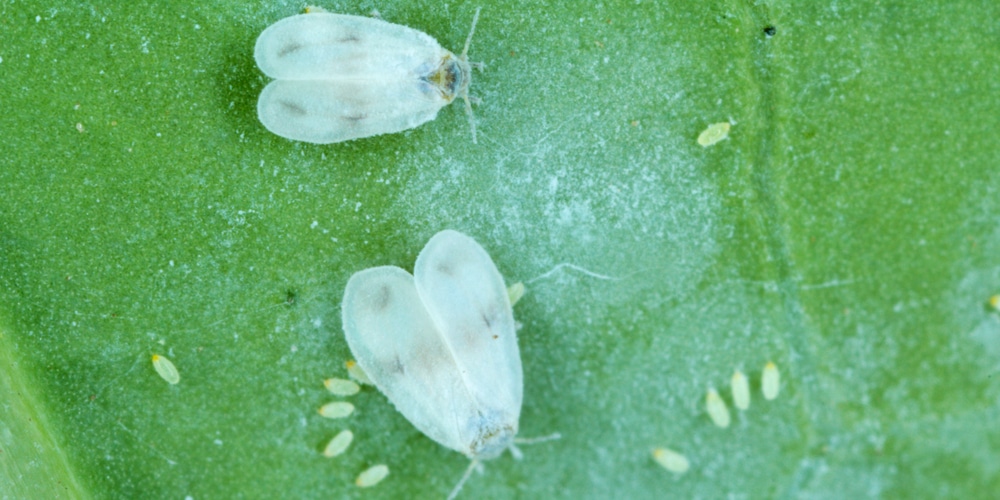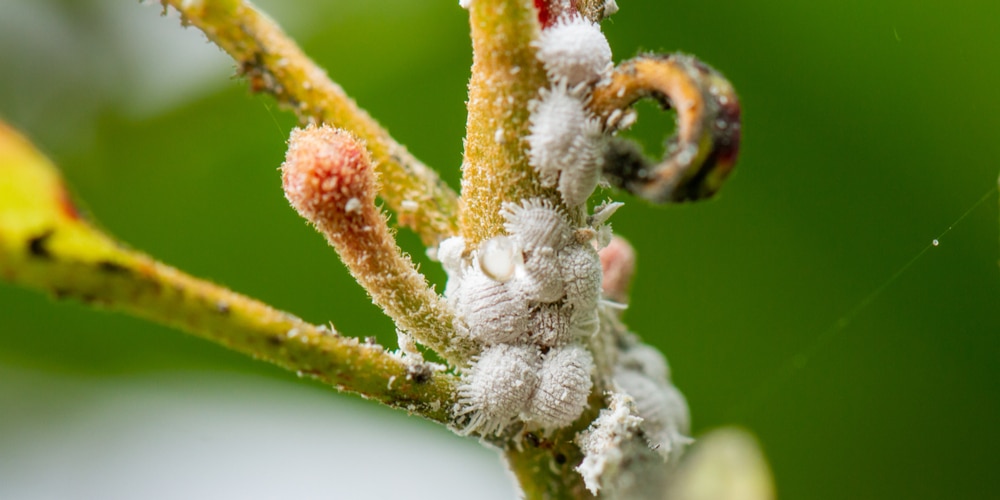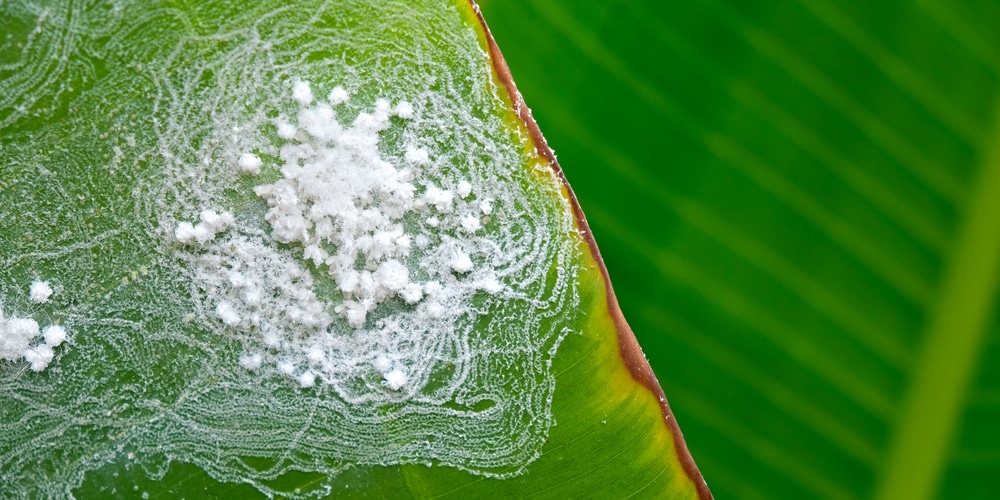Are you seeing tiny white bugs that look like dust all over your house or plants and don’t know what they are or how to get rid of them? Don’t worry; you’re not alone. Many people mistake tiny white bugs for dust or lint. These insects can be a nuisance and are challenging to get rid of if an infestation has occurred.
This blog post will explore five different types of white dust like insects that are common in homes and yards. We’ll also give you some tips on how to get rid of them so that you can keep your garden and house plants pest-free!
Tiny White Bugs that Look Like Dust
Insect pests can be tricky to identify and get rid of. The most common white bugs that look like dust include mold mites, dust mites, woolly aphids, whiteflies, and mealybugs. Here are some identification and elimination tips:
Tiny White Bugs that Look Like Dust: Outdoor insects
Whiteflies, mealybugs, and woolly aphids are commonly found outdoors as they live and feed on plants. They are sap-sucking insects that can also be brought into the home and live on house plants. When an infestation of these insects occurs, your plant may die. Before bringing any new plants into your home or garden, it’s crucial to inspect them for insects. If you find any, you should quarantine the plant and treat it so that your other plants aren’t affected.

How to identify whiteflies?
Whiteflies are tiny, plump insects with white wings. They fly when disturbed, and they lay their eggs on the undersides of plant leaves. When these eggs hatch, the young feed on plant sap until they reach the adult stage. This can occur very quickly, in as little as seven days. Your plant’s leaves will start to turn yellow when affected by whiteflies. These insects are the most difficult to kill because they live on the undersides of leaves, and their eggs are laid so that predators won’t eat them.
How to get rid of whiteflies?
Whiteflies can be treated by spraying an insecticidal soap onto the plant and following up with a neem oil treatment. Alternatively, use a mixture of liquid dish soap and water, which can be sprayed onto your plant’s leaves.
For severe infestations, you can spray a pesticide onto your plant to kill the adult whiteflies and then treat it with neem oil to kill the larvae. Wiping each leaf will also help rid your plant of pests.
How to identify mealybugs?
Mealybugs are found on house plants, outdoor plants, and even indoor surfaces. They’re oval-shaped and have a powdery white coating that is secreted by their skin. This is what causes them to look like dust. These insects live in clusters and suck the sap from plants, causing damage as they feed.
Mealybugs are very small insects with fuzzy bodies and legs. Their eggs are very small and yellow to cream in color. They can be found on plant stems, leaves and roots and will often hide underneath leaves.
How to get rid of mealybugs
Mealybugs can be difficult to remove from house plants because they’re so small and hide well in the crevices around the plant stem. The best way to kill them is using an insecticidal soap and then washing the infected leaves and stems down to remove any remaining insects.
If you have mealybugs on a tropical plant that likes humidity, you can try moving the plant into the bathroom, where the steam will kill the insects.
Related article: Mealybugs in Soil
How to identify woolly aphids?
Woolly aphids look like tiny white tufts of wool on plants. If you see these, your plant may need more sunlight to help dry it out and kill off this sap-sucking pest.
Woolly aphids show up in the winter and early spring. They feed on many different plants, including houseplants. These insects secrete a waxy coating that makes them look like cotton balls when viewed with a magnifying glass.
How to get rid of woolly aphids?
If you encounter woolly aphid infestations, the best way to get rid of them is by spraying an insecticidal soap onto affected plants. Another option is neem oil.
Tiny White Bugs that Look Like Dust: Indoor insects
Mold mites and dust mites are two common tiny white bugs that can be found inside the home.
How to identify Mold mites?
Mold mites can be found in the home or yard. These common insect pests are also commonly referred to as grain mites as they inhabit animal feeds. Mold mites are tiny, spider-like pests that can be found in moist areas such as the washing machine or dishwasher. They can be common in homes that are damp as they feed on mold.
How do you get rid of mold mites?
Mold mites can be killed by reducing the amount of mold in your home. If you have a damp property, you may need to invest in a dehumidifier to help dry things out.
Dust mites
Dust mites inhabit soft furnishings and rugs in the home and can cause allergies in many people. They’re so small; they can live on your skin and aren’t visible to the human eye. These common household pests will lay their eggs on bedding and furniture that isn’t cleaned regularly. Dust mites like to be warm and humid, so they can be found in or around the home.
How do you get rid of dust mites?
Dust mite infestations are a common problem. One way to treat these is with an enzyme cleaner that eats up any debris and dust on surfaces, allowing for quick removal. Manual cleaning will remove the eggs from bedding and furniture. Another great way to get rid of dust mites is by steam cleaning. A steam cleaner produces heat that the insects can stand.
Conclusion
These common household pests can be a nuisance. They will destroy leaves and other plant surfaces until nothing is left to eat. It’s essential to kill them quickly in the home and garden before they multiply and cause extensive damage.
Keep affected plants in quarantine so as not to cross-contaminate other house plants. Insects can lead to dead plants, mold growth, and insecticide resistance, which will make your problem worse. It’s essential to be sure that you understand the biology of the specific insect that you are trying to get rid of. This will allow you to choose the best course of action for your specific situation.

